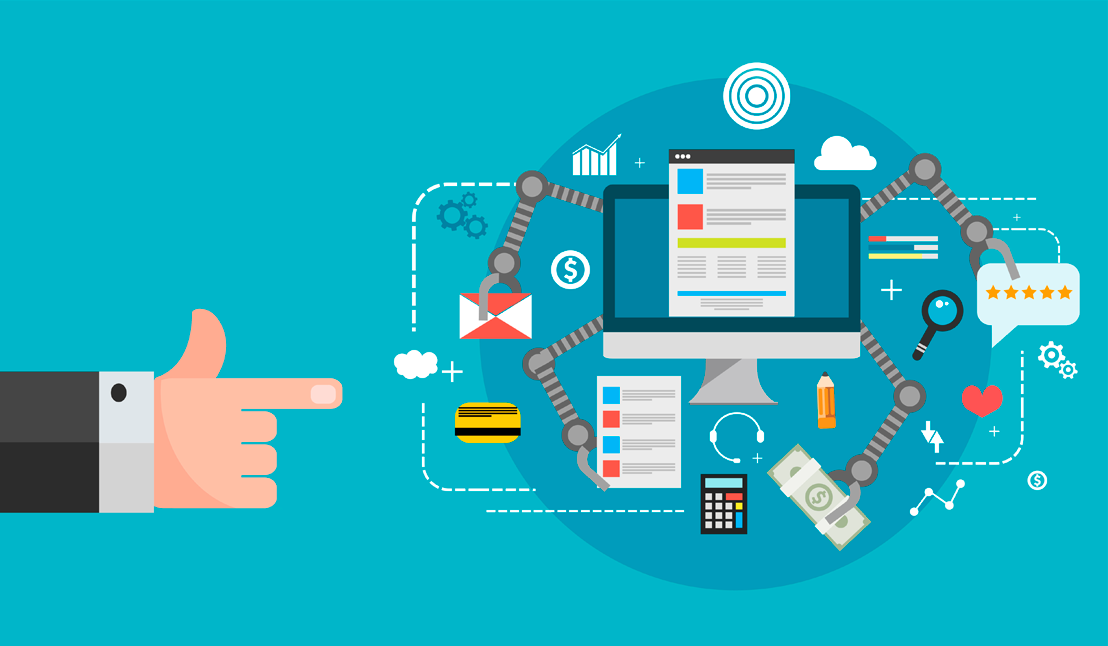 Trends and innovation
Trends and innovation
3 Marketing Automation Tools to Improve your Campaigns
Why invest your time in reading about Marketing Automation?
The answer is simple: marketers that make use of automation tools usually outperform those who don’t. Full stop.
In fact, according to a study carried out by Nucleus Research, marketing automation generates an increase of 14.5% in sales productivity and a 12.2% decrease in costs.
Need more reasons to consider implementing marketing automation tools?
Have a look at these impressive figures:
- According to studies carried out by Salesforce (2017), 67% of leaders in the marketing sector have already invested in some kind of automation solution.
- 74% of those who use this methodology state that its greatest asset is the optimisation of work times.
- It has been calculated that for 2023, investment in Marketing Automation will reach 25 billion US dollars.

In addition, it is proven that this technology has the capacity to:
- Optimise productivity by 43%
- Increase ROI by 41%
- Improve campaign management by 40%
- Improve database quality by 39%
- Improve performance measurement by 37%
- Improve alignment of Marketing and Sales teams by 24%
Now that you know an important part of what this technology can do for your marketing – in other words, the what – you will be asking yourself which tools are used to do it. This is the how.
Today, we bring you a list of our three favourite tools which will lead you to question what you have been doing all this time without a marketing automation tool and to begin your search for the best option for your specific needs.
1. A/B Testing for your Emails and Landing Pages
We marketers know very well that landing pages are fundamental in any lead generation and/or conversion strategies as they become that hook you need to capture new audiences.
Email marketing also plays a central role in the strategies of marketing leaders on a global level. Why? It’s no secret that it’s easier and more profitable to keep existing customers than to bring in new ones. All people who are part of a database are, up to a certain point, qualified. This is a big advantage.
This is where our third element comes into play. A/B Testing, which is no more than the simultaneous launch of two versions of a piece of content or an element to see which works best.
All the leaders in the sector do this type of experiments constantly, as it doesn’t just help to optimise results, it also allows us to better understand the specific audiences of a brand and each stage of its conversion funnel for future strategies.
A vital factor to consider when it comes to doing experiments of this type is whether we should test just one element at once in order to draw more precise conclusions.
This means, for example, working on two versions of the title, or the location of the Call to Action, or the main image, or even the tone (something more aggressive such as “Buy Now” or more subtle like “See prices”).
There are many companies which have tools exclusively for everything to do with email marketing and others for landing pages, etc. because there are few options for tools which can deal with all needs. If you are looking for one, here is our recommendation.
After all, one of the most important phases of any A/B Testing is monitoring the performance of each one of the elements, so why not use technology to make things simple?
2. Advanced campaign manager
Still looking for reasons to come over to the side of automation lovers? This one’s a good one.
One of the most interesting elements of Marketing Automation is the possibility to control all campaigns at an unprecedented level of detail.
This means personalisation of objectives and monitoring the different actions of each contact. This tool enables you to generate engagement, conversions, and – if you take full advantage of it – even recommendations.
But, how exactly does this work?
Through the creation of dynamic routes which consider all the possible actions which each lead or contact may carry out.
Still sound ambiguous?
Let’s look at an example. A contact fills in a form and, once they have become a lead, we send them an email in which they are given two possible actions. The first, to click on the CTA within the email, and the second, of course, to not click on it.
If our lead takes the first option, they will receive a second email (let’s call this “Email A”) and if they take the second option, they will receive a different one (“Email B”). Imagine how many possible routes and advantages are offered by this methodology and how it enables us to adapt the content to the specific needs of each user.
3. Segmentation by behaviour
This advantage is closely linked to the previous point.
How?
When we talk of segmentation, we’re not referring just to demographic data or information about the company where our leads work. Segmenting according to behaviour gives us the chance to achieve a greater level of personalisation in campaigns, which in turn leads to engagement and to success. This is proven.
In creating campaigns, we set up personalised flows which act upon audiences based on the specific events and conditions of each lead, like a purchase or a subscription. The segments are based, among other things, on transactional data.
What is the intention behind this segmentation? To optimise the content and guarantee that it is ideal for each person. We could even rethink or adapt a campaign idea depending on the segments that we have been able to outline or that we have available.
So, is Marketing Automation just a fairy tale?
Be careful with how high you set your expectations!
Although everything seems to indicate that automation is the present and the future of marketing, you should always remember that no tool will ever achieve leads or conversions by itself.
One of the biggest difficulties that you should consider is the time spent implementing each tool. Often, it can take six to eight months to implement a tool 100%, and sometimes they are not fully taken advantage of.
One of the best advantages of DAAS Suite is that implementation takes around four to six weeks. After this time, you begin to reap the rewards from this technology.
In conclusion…
To discover how to increase ROI and guarantee the success of your business, you need to have direct access to the most relevant marketing KPIs.

But think about it: if you have the need to use 2-3 separate platforms, you probably spend a lot of time changing from one to another making it harder to link your metrics directly to your campaigns.
A marketing automation software lets you have all of your different activities connected to your campaign, giving you a complete analysis of the traffic, conversion rate, clicks, etc.
Platforms like DAAS Suite offer a general vision of your data and of the way it works, instead of going back and forth with different platforms.


